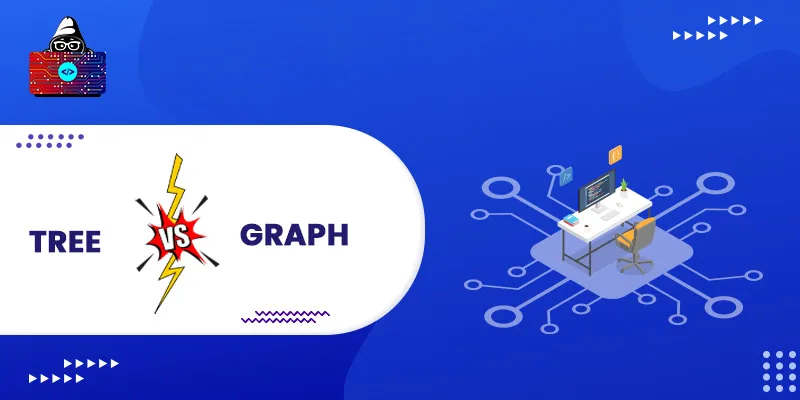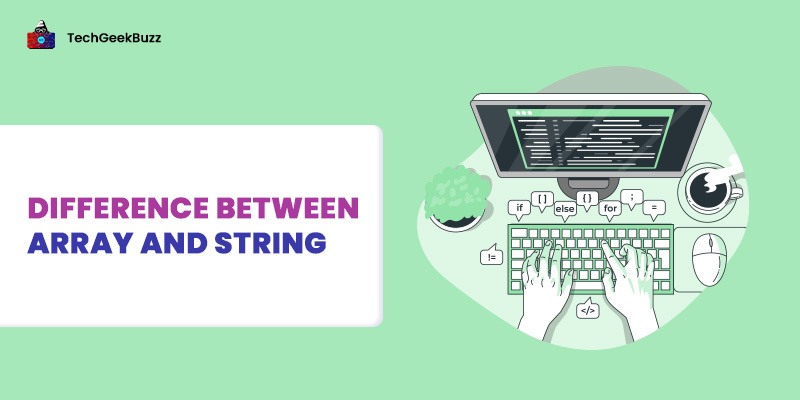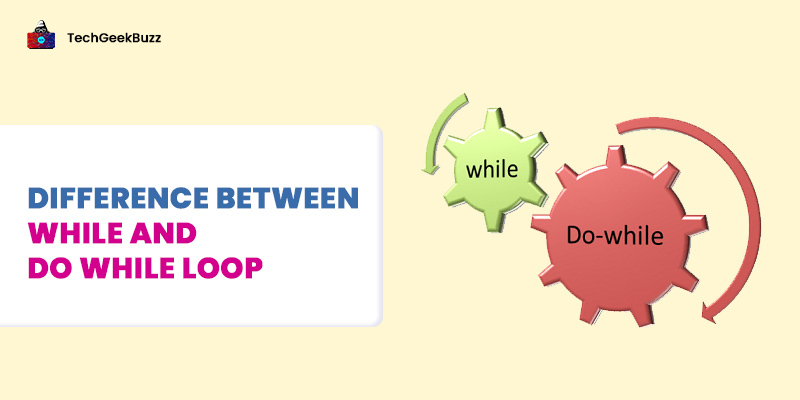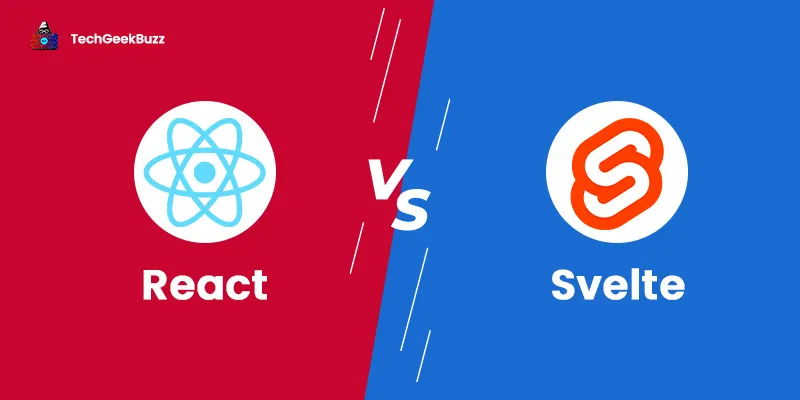Programmers are often interested in the Tree vs Graph comparison. To begin with, know that trees and graphs both are non-linear, non-primitive types of data structure . Both use nodes to represent many structures that are used to solve real-world problems albeit differently. The tree uses the hierarchical model to represent its structure, whereas a graph uses the network model to represent its structure. There are many applications of tree and graph data structures in the programming world.
Here in this article, we have compared these two popular data structures so you can find the differences between the two.
Differences Between Tree vs Graph
Before starting tree vs graph, comparing both the data structures, let's have a look at the non-linear data structure, whose types are tree and graph.
Non-Linear Data Structure
In a non-linear data structure, elements are not stored sequentially. Though there would be a relation between two elements and each element points to some other element but they are not sequentially organized.
Types of Non-Linear Data Structure
There are two types of non-linear data structure:
- Tree
- Graph
1. Tree
A tree is a hierarchical model data structure and it is a collection of a finite number of data elements. Here data elements are nodes. In the tree data structure, the main node is the root node, the topmost node of the structure, and all the other nodes are its children, grandchildren, and so on nodes. There are many types of tree data structures. How elements are stored in the tree data structure depends upon the specific type of the same.
Tree Properties
- Root Node: The topmost node of the tree structure is known as the root node.
- Edge: Edges connect two nodes.
- Parent Node: These are the nodes in the data structure having one or more than one reference node(s) or pointing to other nodes are the parent nodes.
- Child Node: The nodes which are connected by parent nodes are child codes. In the tree, except for the Root node, a parent node can also be a child node.
- Leaf Node: The node which does not have any child node in the structure is known as a leaf node. A leaf node could only be a child node and they lay at the bottom of the structure.
- Subtree: Subtree can be classified as a part of a tree if we take the Root Node in the reference so from a root node there could be two subtrees derived.
- Level: A level of a tree can be classified as the height of a tree. In the tree data structure, the height ascends from top to bottom. The Root node lay at 0 Level and the leaf node lay at the bottom level of a tree, or a subtree.
2. Graph
A graph is also a non-linear data structure. It is a collection of two sets; vertices and edges, where vertices are the nodes and edges are the set of elements that connect the two vertices. The graph data structure follows a network model to represent its structure and the network model can form a closed loop. There are many types of graphs and how the vertices are connected with edges depends upon the specific type of graphs.
Properties of a Graph
- Edges: Edge is represented as E(v,w), where v and w are two vertices connected by edge E.
- Vertices: Vertices are the nodes present in the graph, connected with the help of edges.
- Cycle: A graph structure where the first and the last vertices are the same.
Tree vs Graph: Head-to-Head Comparison
Here we have jotted down a head-to-head comparison between Tree vs Graph in tabular form.
|
Graph |
Tree |
|
Path |
|
| A graph can have a bidirectional path between two vertices. | A tree can have only one path between two nodes. |
|
Root Node |
|
| There is no concept of the Root node in the graph data structure. | The root is the topmost node in the tree data structure. It does not have any parent node. |
|
Tree Graph Theory |
|
| All graphs cannot be trees. | All trees can be graphs. |
|
Loop Structure |
|
| A graph can have a loop structure, which means the last element and the first element are the same. | A tree cannot have a loop structure. |
|
Complexity |
|
| Graphs are more complex than trees because they consist of the loop structure. | The tree is less complex as compared to graphs. |
|
Traversal Tools |
|
| We use BFS (Breadth-First Search) and DFS (Depth First Search) algorithms to traverse through the elements. | We can use pre-order, in-order, and post-order algorithms to traverse through all the elements. |
|
Edge vs Vertices ratio |
|
| There is no predefined edge vs vertices ratio. | In a tree, if the structure has n number of vertices then it will have an n-1 number of edges. |
|
Model Structure |
|
| Uses a network-like model structure. | The tree uses a hierarchical-like model structure. |
|
Application |
|
|
|
|
Types |
|
|
|
Summary
That the end of the Tree vs Graph discussion; Also the difference between tree and graph. To sum it up, although both trees and graphs are non-linear types of data structure, the tree data structure follows a proper structure whereas there is no specific structure followed by a graph. Every tree can be a graph but not vice-versa. The graph data structure is mostly used to solve real-world problems, such as the traveling salesman problem.
On the contrary, Google maps use the graph data structure and its searching algorithms to show the best path to its user. Trees are mostly used in arranging data. There is a subtle difference between a tree and a graph, and in interviews, the difference between these two is often asked.
Better get prepared!
People are also reading:





Leave a Comment on this Post